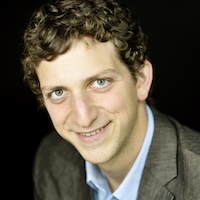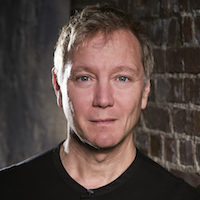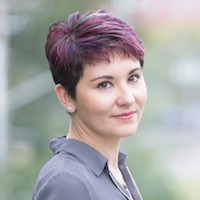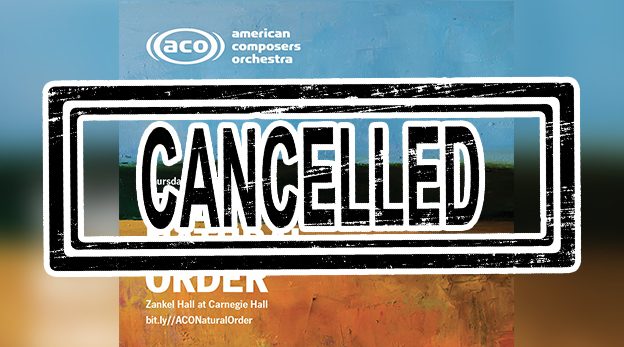In an effort to reduce the spread of the new coronavirus (COVID-19), Carnegie Hall has extended its public closure through Sunday, May 10, 2020. This includes ACO’s April 2 concert. For more information, see the full letter from ACO’s Leadership, click here.
Thursday, April 2, 2020 at 7:30 PM
Zankel Hall at Carnegie Hall
57th St. and 7th Ave., NYC
| ABOUT
The Natural Order features the world premieres of two new works commissioned by ACO that explore the complicated relationship between humankind and the natural world – Mark Adamo’s Last Year: Concerto for Cello and String Orchestra and Nina C. Young’s Out of whose womb came the ice. John Luther Adams’ Become River, previously announced, will be replaced on the program with Silvestre Revueltas’ Colorines. |
FEATURED ARTISTS
American Composers Orchestra
George Manahan, music director and conductor
Jeffrey Zeigler, cello
David Tinervia, baritone
R. Luke DuBois, projection designer
THE WORKS
COLORINES (1932)
A symphonic poem for chamber orchestra by Silvestre Revueltas.
<<MORE INFO>> Inspired by the Colorín, or Coral Tree, the score of Colorines, “not only evokes the deep color that the trees of this name give to the landscape, but also the feelings of the women wearing necklaces made of the red and black fruit of this tree, or of children playing with them” (Musical Quarterly, 1941).
LAST YEAR (World Premiere; ACO Commission)
Cello Concerto by Mark Adamo, written for Jeffrey Zeigler and ACO.
I was brainstorming with the protean cellist Jeff Zeigler about our long-dreamt concerto right about the time I listened—for the first time in a while—to a performance of Vivaldi’s Four Seasons in which my spouse’s father – as concertmaster of the New York Philharmonic – played the solo part under Leonard Bernstein. I was struck, not only by the beauty of the playing, but by the vigor and color of the composition—and by the innocence of its portraits. As soon as I finished listening to the concerti, I watched on the news how Hurricane Harvey—yet another in a series of once-in-a-lifetime storms that now seem to arrive every year—had just inundated the city of Houston. I turned to my spouse and, thinking of the Vivaldi, I thought, “there’s no way you could compose that piece today, could you?”
Last Year is my attempt to answer that question: not in four separate concerti, but in a single four-movement concerto for cello and an orchestra of strings, harp, piano and percussion not dissimilar in forces from Vivaldi’s own. While the score has no overt program, certain events and images shadow it. The nervous, fugitive scherzo of my Autumn is haunted by the memory of Eunice Foote, the first scientist to present proof of greenhouse gases, and first scientist to be dismissed and denied for such proof. Winter stands in awe before Le Triangle Noir, three municipalities in Canada rendered glittering and lethal by an ice-storm of historic dimension that killed 35 people in 1998. Spring: Zephaniah 1:15-16 signals here a rebirth not of hope, but alarm: two ancient musical tropes are joined in contrapuntal battle in the emotional nadir of the concerto. And Summer: for Julia, b. 2046 imagines whatwe could say to someone born into a world of danger—and, perhaps, hope—that now we can only imagine.
-Mark Adamo
OUT OF WHOSE WOMB CAME THE ICE (World Premiere of expanded version; ACO Commission)
A sonic and visual glimpse of a segment of the Imperial Trans-Antarctic Expedition (1914-17) by composer Nina C. Young with original text by Young and David Tinervia.
<<READ MORE ABOUT THE WORK>> Out of whose womb came the ice looks at the expedition from the time they enter the Weddell Sea to the sinking of the Endurance. The visuals and electronics offer narrative elements drawn directly from documents of the journey: journal entries of the crew and images by expedition’s official photographer Frank Hurley. Original Text written by Nina C. Young and David Tinervia – for the full text, visit bit.ly/ACOParables
FEATURED ARTISTS

Jeffrey Zeigler is one of the most innovative and versatile cellists of our time. He has been described as “fiery”, and a player who performs “with unforced simplicity and beauty of tone” by the New York Times. Acclaimed for his independent streak, Zeigler has commissioned over three dozen works, and is admired as a potent collaborator and unique improviser. Mr. Zeigler has released dozens of recordings for Nonesuch Records, Deutsche Grammophon, Cantaloupe and Smithsonian Folkways and has appeared with Norah Jones on her album Not Too Late on Blue Note Records. Zeigler can also be heard on the film soundtrack for Paolo Sorrentino’s Academy Award winning film, La Grande Bellezza, as well as Clint Mansell’s Golden Globe nominated soundtrack to the Darren Aronofsky film, The Fountain. Zeigler can also be seen making an onscreen cameo in Season 4 of the Amazon Prime’s Golden Globe Award winning series Mozart in the Jungle. When he is not performing new works for cello, Zeigler is the Label Director of National Sawdust Tracks, the non-profit, in-house record label and recording studio of National Sawdust, an artist-led, multidisciplinary new music venue in the heart of Williamsburg, Brooklyn. Jeffrey Zeigler was the cellist of the internationally renowned Kronos Quartet for eight seasons. During his tenure, Zeigler had the opportunity to collaborate with a wide range of luminaries from Henryk Gorecki and Noam Chomsky to Steve Reich and Tom Waits. Zeigler is the recipient of the Avery Fisher Prize, the Polar Music Prize, the President’s Merit Award from the National Academy of Recorded Arts, the Chamber Music America Richard J. Bogomolny National Service Award and The Asia Society’s Cultural Achievement Award. Zeigler is the Co-Chair of the String Department and on the Cello Faculty at Mannes School for Music.
<<KEEP READING>>
 Baritone David Tinervia has performed as a soloist throughout the United States and Canada. He made his American Composers Orchestra debut in 2017 singing the world premiere of Nina C. Young’s Out of Whose Womb Came the Ice (Part I), noted by The New York Times in “This Week’s 8 Best Classical Music Moments.” Since then he has deepened his commitment to contemporary vocal repertoire working closely with composer John Harbison in Boston, most recently as the baritone soloist in Harbison’s Fifth Symphony with Emmanuel Music. Later this season at Emmanuel Music, Mr. Tinervia will sing as a soloist in Harbison’s Supper at Eammaus, conducted by the composer himself, as well as a world premiere with Harbison at the piano in honor of his 80th birthday. Mr. Tinervia is also a featured soloist on the commercial recording of James Kallembach’s The Most Sacred Body with Music at Marsh Chapel.
Baritone David Tinervia has performed as a soloist throughout the United States and Canada. He made his American Composers Orchestra debut in 2017 singing the world premiere of Nina C. Young’s Out of Whose Womb Came the Ice (Part I), noted by The New York Times in “This Week’s 8 Best Classical Music Moments.” Since then he has deepened his commitment to contemporary vocal repertoire working closely with composer John Harbison in Boston, most recently as the baritone soloist in Harbison’s Fifth Symphony with Emmanuel Music. Later this season at Emmanuel Music, Mr. Tinervia will sing as a soloist in Harbison’s Supper at Eammaus, conducted by the composer himself, as well as a world premiere with Harbison at the piano in honor of his 80th birthday. Mr. Tinervia is also a featured soloist on the commercial recording of James Kallembach’s The Most Sacred Body with Music at Marsh Chapel.
<<KEEP READING>>
R. Luke DuBois is a composer, artist, and performer who explores the temporal, verbal, and visual structures of cultural and personal ephemera. He holds a doctorate in music composition from Columbia University, and has lectured and taught worldwide on interactive sound and video performance. He has collaborated on interactive performance, installation, and music production work with many artists and organizations including Toni Dove, Todd Reynolds, Chris Mann, Bora Yoon, Michael Joaquin Grey, Matthew Ritchie, Elliott Sharp, Michael Gordon, Maya Lin, Bang on a Can, Engine 27, Harvestworks, and LEMUR, and was the director of the Princeton Laptop Orchestra for its 2007 season. Stemming from his investigations of “time-lapse phonography,” his work is a sonic and encyclopedic relative to time-lapse photography. Just as a long camera exposure fuses motion into a single image, his projects reveal the average sonority, visual language, and vocabulary in music, film, text, or cultural information.
<<KEEP READING>>
THE COMPOSERS

Silvestre Revueltas was born in 1899 in Santiago Papasquiaro, Mexico, and died in 1940 in Mexico City. A composer, teacher, and violinist, he was best known for his colorfully orchestrated music of distinctive rhythmic vitality. Revueltas studied violin and composition in Mexico City from 1913 to 1916. He studied at St. Edward College in Austin, Texas, from 1916 to 1918, and at the Chicago Musical College from 1918 to 1920. Revueltas conducted an orchestra in Mobile, Alabama, in 1928, and in the following year he became assistant conductor of the Mexico Symphony Orchestra, a position he held until 1935. In his compositions, Revueltas suggested folk derivations without quoting actual Mexican folk songs. His major works are symphonic poems on Mexican subjects, such as Sensemayá (1938; based on a poem by Nicolás Guillén), but he also wrote chamber music (String Quartets Nos. 1–4, 1930–32), songs, and film scores (Redes, 1935, and La noche de los Mayas, 1939).

American composer-librettist Mark Adamo first attracted national attention with the libretto and score to his uniquely successful début opera, Little Women, after the novel by Louisa May Alcott. Introduced by Houston Grand Opera in 1998 and revived there in 2000, Little Women has since enjoyed over 100 national and international engagements in cities ranging from New York to Minneapolis, Toronto, Chicago, San Francisco, Adelaide, Mexico City, Tokyo, and the recent European premiere in Belgium (2009) and Canadian premiere in 2010 in Calgary and Banff. It is one of the most frequently performed North American operas of the last two decades. Comparable acclaim greeted the premiere of Lysistrata, or the Nude Goddess, adapted from Aristophanes’ comedy but including elements from Sophocles’ Antigone.. His third full-length opera, The Gospel of Mary Magdalene was commissioned and introduced by San Francisco Opera in June 2013.
<<KEEP READING>>

The music of New York-based composer Nina C. Young (b.1984) is characterized by an acute sensitivity to tone color, manifested in aural images of vibrant, arresting immediacy. Her experience in the electronic music studio informs her acoustic work, which takes as its given not melody and harmony, but sound itself, continuously metamorphosing from one state to another. Her musical voice draws from elements of the classical canon, modernism, spectralism, American experimentalism, minimalism, electronic music, and popular idioms. Her projects strive to create unique sonic environments that can be appreciated by a wide variety of audiences while challenging stylistic boundaries, auditory perception, and notions of temporality. Young’s works have been presented by the National Gallery, the Whitney Museum, LA Phil’s Next on Grand, and the St. Paul Chamber Orchestra’s Liquid Music Series. Her music has garnered international acclaim through performances by American Composers Orchestra, the Milwaukee Symphony, the Minnesota Orchestra, the Phoenix Symphony, Le Nouvel Ensemble Moderne, the Argento Chamber Ensemble, Either/Or, the JACK Quartet, mise-en, wild Up, and Yarn/Wire.
<<KEEP READING>>
The commission and world premiere performance of Mark Adamo’s Last Year is made possible with lead funding from Susan W. Rose Fund for Music, with additional support from ACO’s 2020 Commission Club.
The commission and world premiere of Nina C. Young’s Out of whose womb came the ice is generously supported by the Virginia B. Toulmin Foundation.


